LC-3 Coupler: Technical Guide to a 3-Way Pneumatic Coupler with Automatic One-Way Shut-Off
The LC-3 Coupler is a purpose-built 3-way pneumatic coupler designed for compressed air distribution, tool hookup, and factory air system branching. Engineered with an integrated one-way automatic shut-off valve in each port, the LC-3 enables safe, automatic isolation when a hose or tool is disconnected, reducing downtime and minimizing blow-by. Available in multiple materials (chrome-plated zinc die-cast, steel, and brass) and multiple mechanical configurations, the LC-3 delivers reliable, ergonomic coupling and decoupling for industrial and commercial pneumatic systems.
Introduction
Pneumatic distribution systems rely on robust, repeatable, and safe connection hardware. The LC-3 Coupler represents a class of multi-port couplers that simplify branch routing and rapid tool changes while preserving safety through built-in shut-off valving. Unlike a simple multi-tee that leaves disconnected ports open, the LC-3’s integrated one-way valves automatically close when a mating plug is removed, preventing downstream venting and reducing the risk of contamination and energy loss. This article provides a comprehensive technical overview of the LC-3, including specifications, materials and build quality, typical applications, installation and maintenance guidance, comparative analysis with related products, and practical recommendations for selection and use in industrial environments.
Technical Overview
At its core, the LC-3 is a three-port pneumatic coupler that allows a single source or branch to feed up to three downstream lines or tools. Each port includes a spring-loaded, one-way sealing mechanism (poppet valve) that remains closed when no mating plug is inserted. When a plug is inserted, the internal valve is mechanically actuated open by the plug’s mating face, creating a continuous flow path. When the plug is withdrawn, the spring returns the poppet to the closed position, automatically isolating the port.
Key functional aspects:
- Three-way distribution: Configure multiple tools or branches from a single supply point without external shut-off valves.
- Integrated one-way shut-off: Each port isolates automatically, preventing air loss and making tool changes safer.
- Smooth plug engagement: Designed for low-insertion force and positive latching to reduce operator fatigue and wear.
- Material options: Select from chrome-plated zinc die-cast (ZnDC), steel, or brass for corrosion resistance and mechanical strength suited to the environment.
- Compatibility: Works with standard pneumatic plugs and sockets; thread and port size options can be specified for NPT or BSP threads as required.
Internal Mechanics and Sealing
The LC-3 employs a spring-loaded poppet design in each port. The typical poppet assembly consists of:
- A metal stem and poppet face that mates against a sealing seat.
- An elastomeric sealing element (commonly nitrile rubber / NBR for standard air/water/oil service; alternate elastomers such as Viton® available for higher temperature or oil compatibility).
- A compression spring matched to provide rapid closure and resistance to vibration-induced opening.
- Retaining hardware and an internal guide to ensure concentric movement and long-term durability.
When a mating plug is inserted, the plug face compresses the poppet against the spring, aligning the internal flow path and revealing the passage through the coupler body. The LC-3’s design emphasizes full-bore or near-full-bore flow for minimized pressure drop relative to the port size.
Specifications and Dimensions
The following table summarizes the technical specifications, dimensional data, and model variants for the LC-3 family. Values are representative of standard configurations; consult factory data sheets for exact dimensional drawings and optional thread/port sizes.
| Attribute | Specification / Range | Notes |
|---|---|---|
| Applicable fluids | Air, water, oil | Filtered fluids recommended; check seal compatibility |
| Working pressure | 0–150 PSI (0–990 kPa) | Do not exceed rated pressure; intermittent spikes should be mitigated |
| Working temperature | 32–140 °F (0–60 °C) standard | Higher-temperature elastomers available on request |
| Standard port/thread options | 1/4″ NPT (standard); optional 1/4″ BSPP, 3/8″ BSP/NPT | Specify thread standard at order |
| Typical Cv per port | 0.4 – 0.9 | Depends on port size and internal flow form; three-port configuration reduces total flow capacity vs single larger bore |
| Seat material | NBR (standard); Viton® optional | Choose materials based on fluid and temperature |
Model Variant Dimensions and Weights
The table below lists the common LC family models, their functional configuration, approximate weight, and nominal external dimensions for installation and mounting considerations. Dimensions are nominal; use certified drawings for precise mounting and clearance design.
| Model | Configuration | Approx. Weight | Overall Length (mm) | Max Diameter (mm) | Nominal Port Thread |
|---|---|---|---|---|---|
| LC-2A | High coupler, 2-port | 205 g | 65 mm | 30 mm | 1/4″ NPT (std) |
| LC-3 | High coupler, 3-port | 298 g | 85 mm | 36 mm | 1/4″ NPT (std) |
| LC-3A | High coupler, circular 3-port | 302 g | 88 mm | 38 mm | 1/4″ NPT (std) |
| OLC-2A | One-touch coupler, 2-port | 222 g | 72 mm | 32 mm | 1/4″ NPT (std) |
| OLC-3 | One-touch coupler, 3-port | 325 g | 90 mm | 40 mm | 1/4″ NPT (std) |
| OLC-3A | One-touch coupler, circular 3-port | 326 g | 92 mm | 42 mm | 1/4″ NPT (std) |
Materials and Build Quality
The LC-3 is offered in three primary construction materials, each selected to match environmental demands and mechanical requirements:
- Chrome-plated zinc die-cast (ZnDC): Economical, corrosion-resistant exterior finish with a smooth chrome plating. Zinc die-cast bodies provide dimensional stability and are commonly used where moderate mechanical strength and good corrosion resistance are required. Chrome plating enhances appearance and surface wear resistance.
- Steel: High-strength steel construction is offered for heavy-duty applications where mechanical loading, impact resistance and wear tolerance are critical. Steel bodies are typically zinc- or nickel-plated for corrosion protection.
- Brass: Brass construction provides excellent corrosion resistance and is preferred in water service, mild chemical environments, and where dezincification may be a concern. Brass also provides good machinability and longevity in moderate-pressure pneumatic systems.
Component quality and finishing details:
- Seals: Standard elastomers are NBR (nitrile) for compatibility with compressed air and common oils. Fluoroelastomer (Viton®) and EPDM seals are available for elevated temperature and chemical compatibility.
- Surface coatings: Chrome plating on ZnDC bodies improves surface hardness and reduces wear from frequent coupling cycles. Steel parts are passivated or plated to minimize corrosion.
- Internal plating and lubrication: Internal components are finished to minimize friction and wear. Factory-applied lubrication and assembly torques are controlled to ensure consistent actuation forces across production units.
- Manufacturing tolerances: Valve seats and poppets are machined and lapped to tight tolerances to deliver reliable sealing performance (typical leak rates < 1 SCCM in static conditions with compatible seals).
Key Features
The LC-3’s design includes a set of technical and ergonomic features optimized for industrial pneumatic systems:
- Integrated automatic one-way shut-off valves: Each port has a built-in shut-off that closes automatically upon plug withdrawal to prevent air loss and potential hazards.
- Three-way branching: Single coupler allows connection of up to three downstream hoses, reducing the need for separate manifold blocks or additional fittings.
- Low actuation force: Smooth mating geometry minimizes insertion force while maintaining secure engagement.
- Material versatility: Select zinc die-cast, steel or brass constructions to match operational environments.
- Serviceability: Poppet assemblies and seals are modular and replaceable to extend service life and reduce life-cycle cost.
- Standardized thread options: Accepts common NPT and BSP thread forms for global compatibility.
- Compact footprint: Engineered to minimize obstruction and allow close mounting to equipment and walls.
Use Cases and Applications
The LC-3 is versatile and finds application in a range of industries and system architectures. Typical uses include:
Factory and Production Lines
In assembly lines and production cells, multiple pneumatic tools often need to be connected close to a common supply. An LC-3 can be mounted on a wall or machine frame to provide three quick-connect outlets with automatic isolation. This reduces line-down time when tools are swapped and prevents the entire branch from depressurizing.
Automotive Workshops and Maintenance Bays
Automotive technicians frequently use several pneumatic tools at a single workstation. The LC-3 allows immediate access to multiple tools without installing separate valves, and the automatic shut-off prevents tools from losing pressure when disconnected.
Robotics and End-of-Arm Tooling (EOAT)
When multiple vacuum or pneumatic actuators are used on a robot wrist, a compact 3-way coupler simplifies the intermediary hose routing, enabling quick tool change operations — beneficial in flexible automation cells and quick-change EOAT systems.
Field Service and Portable Equipment
Portable compressors and pneumatic supply stations can be fitted with LC-3 couplers to support multiple concurrent tools on a temporary job site, while isolating unused outlets automatically to conserve pressure and reduce noise.
Water and Low-Viscosity Oil Service
With appropriate sealing materials and corrosion-resistant bodies, the LC-3 can be used in fluid distribution of water or low-viscosity oils (e.g., tool lubrication circuits), but material compatibility and contamination risk must be evaluated before use. Brass or stainless-steel options are preferred for water service.
Comparison with Alternative Coupling Solutions
Selecting between a three-way coupler, multiple two-way couplers, or a dedicated manifold depends on flow requirements, footprint, and operational ergonomics. The table below provides a direct comparison of the LC-3 family against typical alternatives.
| Feature | LC-3 (3-way coupler) | LC-2A / 2-way coupler | Separate valve manifold | Inline T-connector (non-valved) |
|---|---|---|---|---|
| Automatic shut-off on disconnect | Yes (per port) | Yes (per port) | Optional (depends on valve selection) | No |
| Compact multi-outlet footprint | High | Low (requires additional bodies) | Medium to High (larger) | Very low cost, simple |
| Flow capacity | Moderate (split among three ports) | Higher per port (single split) | High (sized valves available) | High potential but no isolation |
| Installation complexity | Low | Low | Medium (mounting, piping, valves) | Lowest |
| Serviceability | Good (replaceable poppets/seals) | Good | Excellent (individual valves replaceable) | Poor (no shut-off, sealing issues) |
| Typical applications | Multiple tools per station, portable distribution | Single tool quick-connect | Central control stations, complex distribution | Permanent branch where isolation not needed |
Benefits and Limitations
Benefits
- Automatic isolation: Prevents accidental pressure release and keeps unused branches closed.
- Reduced system complexity: Eliminates the need for external valves for each branch and reduces plumbing.
- Flexibility: Multiple variants and materials permit tailoring to specific environments and fluids.
- Operator ergonomics: Smooth plug/socket engagement reduces user effort and wear.
- Serviceability: Replaceable internal seal kits lower life-cycle costs compared to integrated non-serviceable components.
Limitations and Technical Considerations
- Flow division: When multiple outlets are used simultaneously, available flow and downstream pressure are shared; this can lead to pressure drop if the source capacity is limited.
- Temperature range: Standard elastomers limit operating temperature to 0–60 °C (32–140 °F); higher temperature environments require special seals.
- Corrosive environments: ZnDC chromed bodies are corrosion-resistant for general use, but highly corrosive atmospheres (salt spray, acid fumes) require brass or stainless-steel solutions.
- Particle contamination: Particulates in the fluid can accelerate wear of poppet seals and seats; in-line filtration is recommended.
- Not for hazardous gases: Unless explicitly certified, do not use for oxygen service, flammable gases, or life-support applications without appropriate approvals and material compatibility checks.
Selection Guidelines
Proper selection of an LC-3 variant requires evaluating several system parameters:
- Flow demand and source capacity: Estimate peak flow of the combined downstream loads (SCFM or L/min). Choose a port size and coupler with sufficient Cv to maintain acceptable pressure at the farthest tool.
- Operating pressure: Verify the application stays within 0–150 PSI for continuous service. For systems with higher pressure spikes, include pressure relief devices or select a coupler rated for higher pressures.
- Fluid compatibility: Confirm seal material compatibility with oil additives, water chemistry, or any solvents present in the system.
- Environment: Choose body material based on exposure to corrosive elements, impact risk, or aesthetic requirements.
- Thread and mounting: Standard 1/4″ NPT is common; select BSP or alternate sizes if required by regional piping standards.
- Serviceability needs: If frequent disassembly is expected, choose variants with easy-to-replace seal kits and documented maintenance procedures.
Installation and Commissioning
Follow these professional best practices when installing LC-3 couplers into a pneumatic system:
- Clean piping: Flush new piping to remove swarf, chips, and debris before connecting the coupler to avoid contamination of seals and valve seats.
- Thread sealing: Use PTFE tape or anaerobic thread sealant on tapered threads (NPT). For parallel threads (BSPP), use a suitable sealing washer or sealant per the supplier’s recommendation.
- Tightening torque: Tighten couplers to recommended torque values; over-torquing can distort threads and damage the body. Typical torque ranges for 1/4″ NPT steel/brass components: 8–12 Nm, subject to thread lubricant and thread engagement—refer to manufacturer data sheet.
- Mounting orientation: LC-3 units can be mounted in various orientations, but avoid mounting with the body drain points pointing upward where water or condensate could accumulate in the ports; horizontal or downward-facing ports are preferable in condensing environments.
- Isolation during commissioning: Pressurize slowly and check for leaks. Use a soapy water solution or electronic leak detector for low-volume leaks around threads and seals.
- Filtration and drying: Install particulate filters and coalescing filters upstream to prolong seal life; in cold environments, install condensate removal devices to prevent freezing.
Maintenance and Care Guide
Planned maintenance increases lifetime and reliability. The following maintenance guidance is for typical usage in industrial compressed air systems:
Routine Inspection (Weekly to Monthly)
- Visually inspect couplers for external damage, corrosion, or excessive wear.
- Check for air leaks at thread connections and port interfaces using a soapy solution.
- Ensure that plug insertion and release operate smoothly without sticking or excessive play.
Preventive Maintenance (Quarterly)
- Verify actuation force and seal integrity. If a port exhibits slow closure or leakage under static conditions, replace the poppet seal.
- Clean ports and mating plug faces to remove accumulated oil, dust, or paint overspray.
- Replace NBR seals every 6–12 months in harsh environments or sooner if wear is observed; Viton® seals may extend intervals where oil/temperature is elevated.
Component Replacement and Overhaul (Annually or As Needed)
- Disassemble poppet assemblies following manufacturer instructions. Replace springs, poppets, and sealing elements as a matched set where recommended to maintain consistent closure dynamics.
- Inspect internal shear surfaces for galling or scoring; minor surface damage can be remediated with light polishing, but significant damage warrants component replacement.
- Reapply appropriate lubrication to moving metal-to-metal contact points using compatible pneumatic tool oil or assembly grease as specified by the manufacturer.
Troubleshooting Common Issues
| Symptom | Likely Cause | Recommended Action |
|---|---|---|
| Leak from port when no plug inserted | Damaged/deteriorated seat or poppet seal | Replace seal and inspect seat surface |
| High insertion or release force | Contaminants, corroded mating surfaces, or spring misalignment | Clean mating faces; inspect spring and guide; replace if corroded |
| Intermittent closure or oscillation under pulsating flow | Incorrect spring rate or worn poppet guide | Install correct replacement spring/poppet; consider dampener upstream |
| Excessive pressure drop during simultaneous draw on multiple ports | Source capacity insufficient or port Cv too small | Increase supply capacity, re-size piping, or use separate supply coupler |
Best Practices for Longevity and Reliability
- Upstream filtration: Install a particulate filter (5–10 µm) and coalescing filter unit upstream of the coupler to remove solids and oil droplets that can degrade seals.
- Use lubricated air if needed: Where tool lubrication is required, maintain oil carryover within recommended levels to prevent over-lubrication which can attract dust.
- Environmental protection: In corrosive or outdoor environments, use brass or plated steel variants and consider additional protective enclosures.
- Spare parts management: Maintain a small inventory of seal kits, springs, and poppet assemblies to reduce downtime for routine maintenance.
- Training and safety: Train operators on correct insertion and removal techniques to avoid damage to plug faces and to reduce the likelihood of accidental disconnection under load.
Regulatory and Safety Considerations
The LC-3 is a mechanical accessory for pneumatic systems and should be installed, operated and maintained in accordance with local safety standards and regulations for compressed gas systems. Key considerations include:
- Pressure vessel and pneumatic system regulations — ensure all system components are rated for the maximum operating pressure and are within certification requirements.
- Lockout/tagout during maintenance — isolate compressed air sources before disassembling couplers to prevent accidental actuation or pressurized release.
- Material safety — ensure materials in contact with process fluids do not pose contamination risks (e.g., food or pharmaceutical service requires specific grades and certifications).
Practical Examples and Deployment Scenarios
To illustrate typical deployment, consider these two real-world scenarios:
Scenario 1 — Assembly Station with Three Pneumatic Tools
An assembly station requires three hand tools (impact wrench, riveter, and air screwdriver) that are not used simultaneously but frequently changed. Installing an LC-3 at the end of the supply riser allows each tool to be connected quickly. When a tool is disconnected, its port automatically seals, preventing the other tools from depressurizing and conserving compressed air.
Design choices:
- Use LC-3 in brass for durability and corrosion resistance due to occasional water washdowns.
- Specify NBR seals for general oil compatibility; choose Viton® if synthetic oils are present.
- Install a 5 µm particulate filter upstream to protect poppet seals.
Scenario 2 — Portable Compressor for Field Service
A portable compressor is used for onsite tire inflation, nailing, and tool usage. Fitting an LC-3 to the compressor outlet provides three simultaneous connection points for flexible tools without additional plumbing. The built-in shut-off prevents hoses from losing pressure when disconnected.
Design choices:
- Choose a steel-bodied LC-3 for impact resistance during transport.
- Use 1/4″ NPT threading to match common portable hose fittings.
- Maintain spare seal kits in the technician kit for quick repairs in the field.
Frequently Asked Questions (Technical)
Can the LC-3 be used for high-pressure pneumatic systems above 150 PSI?
No — the standard LC-3 is rated up to 150 PSI. For higher pressures, a coupler specifically rated for that pressure must be selected. Using components above their rated pressure risks catastrophic failure.
Are custom port sizes or materials available?
Yes — many manufacturers offer custom configurations, including alternate thread standards (BSPP), larger port sizes, and special material options (e.g., stainless steel) for corrosive or hygienic environments. Consult the supplier for minimum order quantities and lead times.
How do I choose between LC-3 and an LC-3A circular variant?
The LC-3A circular variant is intended for applications where port orientation in a circular pattern simplifies hose routing or reduces torque on the body during multi-hose insertion. Choose LC-3A when layout constraints or ergonomics favor a radial port arrangement.
Conclusion
The LC-3 Coupler provides a technically sound, ergonomically friendly solution for three-way pneumatic distribution with the operational advantage of integrated one-way automatic shut-off valves. Offering multiple materials (chrome-plated ZnDC, steel, brass) and configuration variants (high coupler, circular ports, one-touch options), the LC-3 can be adapted to a broad range of industrial, workshop, and field applications. When selected and maintained according to system requirements — including upstream filtration, compatible seals, and proper installation practice — the LC-3 reduces leakage, simplifies tool changes, and improves safety at the point of use.
For system designers and maintenance engineers, the LC-3 is a practical component for reducing system complexity while improving usability. Carefully evaluate flow requirements, fluid compatibility, and environmental conditions when choosing the specific variant and material. Continued adherence to preventative maintenance practices will assure long service life and dependable performance.
If you require detailed engineering drawings, certified material declarations, or custom port/thread options, contact your LC-3 supplier or manufacturer for technical datasheets and CAD models to incorporate into your system design.

 Tiếng Việt
Tiếng Việt
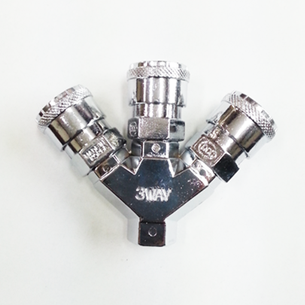
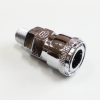
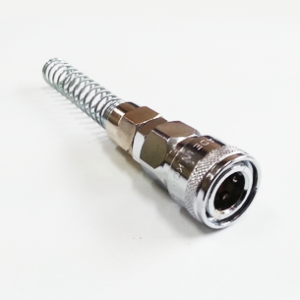
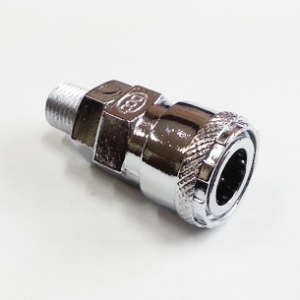
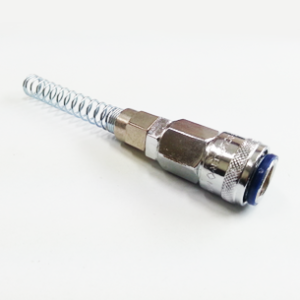
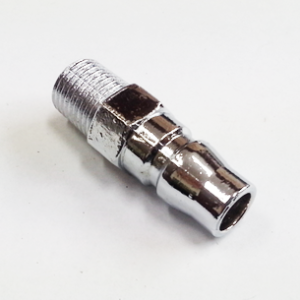
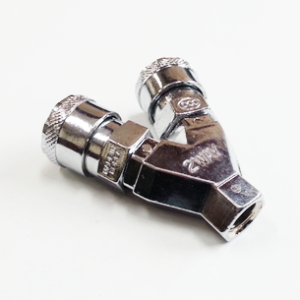
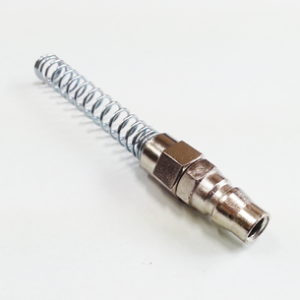
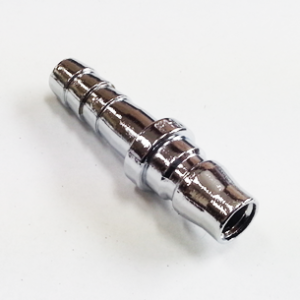
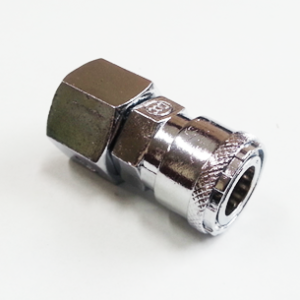
Reviews
There are no reviews yet.